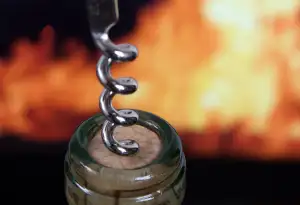Revive Your Cast Iron: Expert Tips on How to Clean Rust Off Cast Iron Pans

Cast iron pans are beloved for their durability and ability to retain heat, making them a staple in many kitchens. However, if not properly cared for, they can develop rust over time. Rust not only affects the appearance of the pan but can also impact its cooking performance. In this article, we will discuss expert tips on how to effectively clean rust off cast iron pans, helping you revive these kitchen essentials and extend their lifespan. By following these steps, you can restore your cast iron pans to their former glory and continue to enjoy cooking with them for years to come.
Gather Necessary Supplies
To effectively clean rust off your cast iron pan, you will need a few essential supplies. Firstly, gather a steel wool pad or brush to scrub away the rust. Make sure it is coarse enough to remove the rust but not too abrasive that it damages the pan's seasoning. Next, grab some distilled white vinegar, which is known for its rust-removing properties. Additionally, have some water and mild dish soap on hand for rinsing the pan after cleaning. Lastly, prepare a clean towel or paper towels for drying the cast iron thoroughly before seasoning it again.
Scrub the Cast Iron with Steel Wool
To effectively remove rust from your cast iron pan, start by scrubbing it with steel wool. Make sure to use a coarse grade steel wool that is specifically designed for cleaning metal surfaces. Gently scrub the rusty areas in a circular motion, applying moderate pressure. This will help loosen and lift the rust off the surface of the cast iron. Be thorough in your scrubbing to ensure that all rust spots are properly addressed. Avoid using harsh chemicals or abrasive cleaners as they can damage the seasoning on your pan.
Apply a Vinegar Solution
To apply a vinegar solution to your rusty cast iron pan, mix equal parts of white vinegar and water in a container large enough to submerge the pan. Place the pan in the solution and let it soak for a few hours or overnight. The acidity of the vinegar helps to break down the rust, making it easier to remove. Vinegar is a natural and effective way to tackle rust without harsh chemicals, making it safe for both you and the environment.
Let the Cast Iron Sit
After applying the vinegar solution, allow the cast iron pan to sit for at least 10-15 minutes. This will give the acidity of the vinegar time to break down and loosen the rust from the surface of the pan. The acetic acid in vinegar is a mild acid that works well for removing rust without causing damage to the cast iron. During this resting period, you may notice some bubbling or fizzing as the vinegar reacts with the rust. This is a normal part of the cleaning process and indicates that the vinegar is actively working to dissolve the rust.
Scrub and Rinse
Once you have allowed the vinegar solution to work its magic on the rust, it's time to scrub and rinse your cast iron pan. Using warm water and a stiff brush or sponge, scrub the surface of the pan to remove any remaining rust particles. Be sure to scrub both the inside and outside of the pan thoroughly. Once you have removed all traces of rust, rinse the pan with warm water to ensure that all debris is washed away. It's important to dry the cast iron completely after rinsing to prevent any new rust from forming.
Dry and Season the Cast Iron
After thoroughly cleaning and rinsing your cast iron pan, it is crucial to dry it completely to prevent rust from forming again. Use a clean towel to dry the pan thoroughly inside and out. To ensure all moisture is removed, you can also place the pan on a stovetop over low heat for a few minutes.
Once the pan is completely dry, it's time to season it. Seasoning involves applying a thin layer of oil to the surface of the pan to create a protective barrier against moisture and prevent rusting. You can use any high-smoke point oil like vegetable oil, flaxseed oil, or coconut oil.
To season your cast iron pan, apply a small amount of oil to a paper towel or cloth and rub it all over the pan, including the handle and exterior. Make sure to coat the entire surface evenly. Place the oiled pan upside down in an oven preheated to 350°F (175°C) for about an hour.
After an hour, turn off the oven and let the pan cool inside before removing it. Your cast iron should now have a shiny black patina that will help protect it from rust and improve its non-stick properties. Remember to repeat this seasoning process regularly to maintain your cast iron cookware in top condition.
Maintenance Tips for Preventing Rust
1. Always ensure your cast iron pan is completely dry before storing it to prevent rust formation.
2. Apply a thin layer of oil after each use to create a protective barrier against moisture.
3. Avoid using harsh detergents or abrasive scrubbers that can strip the seasoning layer and expose the metal to rust.
4. Store your cast iron pans in a dry place with good air circulation to prevent humidity buildup.
5. Regularly inspect your cast iron cookware for any signs of rust and address them promptly to prevent further corrosion.
6. Use your cast iron pans frequently as the oils from cooking help maintain the seasoning and protect against rust formation.
Published: 14. 03. 2024
Category: Home



